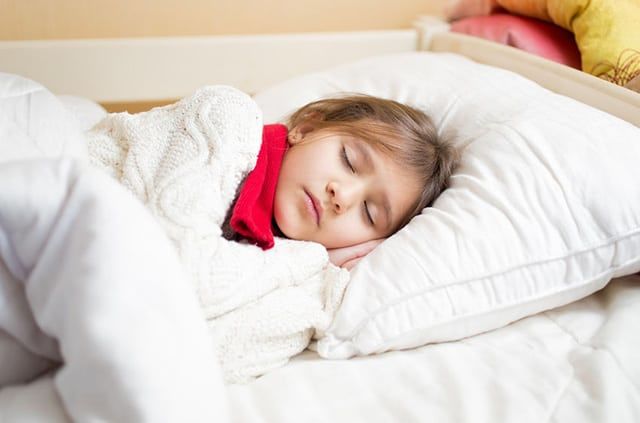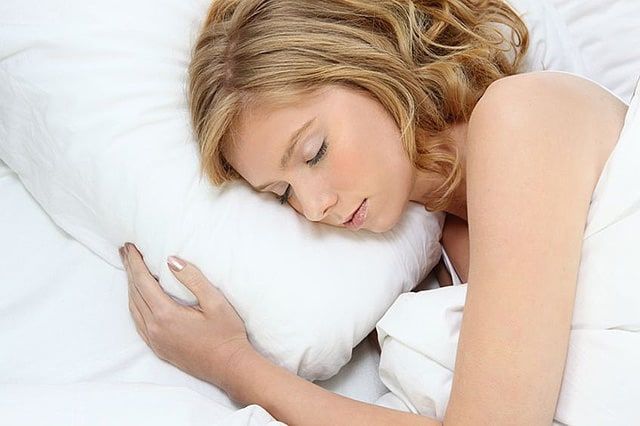In the winter months some of us can’t wait to jump into a warm, flannel lined bed and cover ourselves with blankets before drifting off to sleep. And then generally we awake a few hours later uncomfortable, sweating, and struggling to get back to sleep. Others of us have to have a window open, or a fan circulating air in order to get to sleep each night no matter what the season is: the common denominator? Our bodies like it cool at night, and when it does begin to warm up- it interrupts our sleep.
The benefits of sleeping in a cold room are varied, but all point to a better night’s rest and improve not only your sleep, but your health as well. And with sleep deprivation being a leading cause of heart disease, obesity, and interruptions in cognitive function- paying attention to details to help you sleep is worthwhile.
You may be interested in: The Surprising Health Benefits Of Napping
What Are the Optimal Temperatures?
Part of why sleeping in a cold room is better is due to how it initiates rest. The ideal sleeping temperature falls anywhere between 60 and 67 degree Fahrenheit, and as you sleep your body temperature lowers naturally. Introducing your body to a cooler environment helps stimulate sleep and allows you to cycle naturally though the sleep stages.
Temperatures outside this range can disrupt your REM (rapid eye movement) stage, which is a restorative phase of our sleep and possibly where our brain processing many of our experiences. Disruptions in this stage can force you to try and catch back up, resulting in grogginess and a sense of being tired even if you feel you got enough sleep.
These sleep stages are crucial to our mental processes through the day and when they are incomplete may affect our cognitive brain functions concerning decision making. This is also detrimental to our physical health as well since our reaction times can be adversely affected as well. Sleep deprivation is a leading cause of vehicular and industrial accidents, making your restless sleep a problem that affects more than just the individual.
Fall Asleep Easier
Even though we like to warm things up in the winter, and cool things down in the summer, your thermostat can make or break your night’s sleep. As mentioned, when we sleep our body temperatures naturally decrease to allow us to recharge and cycle through multiple sleep stages.In order to get into a deeper sleep faster, lowering your environmental temperatures will help you get to sleep faster and also allow a deeper sleep. Physiological changes begin to occur 60 to 90 minutes prior to falling asleep when we allow our natural waking and sleep cycle occur. We begin to lose heat from our central core during this time without even noticing, which can bring on a feeling of tiredness.
If your environment is too warm during this time period, your body will attempt to regulate its temperature and you will waste energy- causing you to stay awake, or struggle to fall into a deep enough sleep to allow a regular sleep cycle.
Increase Your Metabolism
Your metabolism is significantly affected by cooler temperatures as well, which is to your benefit. Metabolism is part of the process that provides us with energy through what our bodies store. Cooler sleeping temperatures increase the brown fat we store that is what helps us burn calories and help us dispose of excess blood sugar. Consider this the “good” fat that we need in order for our bodies to process energy effectively.
Studies show that decreasing temperatures before heading off to bed and keeping your skin temperature at a comfortable, but not warm level, is the most effective for your metabolic rates.
Decrease Your Risk of Disease
A rise in brown fat is not just good for your metabolism. Since it supports a healthy body weight, you can reap the benefits of this in more way than one. Higher levels of brown fat decrease your chances of obesity and the many health risks associated with it. Obesity is a leading cause of diabetes, heart disease, and even some cancers. Although brown fats are not the sole indicator of a healthy body weight, it definitely plays an important role in your overall health.
Due to how it helps dispose of excess sugar, it helps fight against diabetes as well and regulates the body’s sugar usage. Healthy body weights are also less prone to cardiovascular diseases, and it is suggested that healthy levels of brown fat in adults may also reduce triglycerides and cholesterol levels. Although a cool night’s sleep is not the only way to support these brown fats, it is one way to add to a list of healthy lifestyle choices.
You may be interested in: The Link Between Sleep & Your Heart Health
Support Your Natural Melatonin Levels
The old adage of needing your ‘beauty rest’ wasn’t far off, and the advantages of combining enough sleep with a cool environment definitely has its health benefits concerning your looks. It’s a scientifically proven fact that temperatures that average in the 60’s force your body to produce more melatonin, a naturally occurring hormone that is directly related to helping you fell asleep. Melatonin is created in your pineal gland and is released according to daylight to help get you ready to sleep.
This combination of dropping body temperatures and low light levels that triggers melatonin to begin to take effect are a recipe for a good night’s sleep, and interrupting this process may disrupt your entire night’s rest. Dimming your lights and taking some time away from your screens, which emits blue light and mimics daylight- tricking your brain into thinking it should be awake- is a healthy step in allowing this entire process to take place.
Melatonin levels have been related to your bodies ability to protect brain health, and fight against some cancers, diabetes, heart disease, and Alzheimer’s. With your body getting what it needs each night to stay health, the results will become increasingly visible as your skin is also a receptor for this hormone and can suppress UV damage and make your skin and hair rejuvenate at a faster rate.
Learn more about how to Improve Sleep Health with Nootropics
Are There Any Health Risks?
Since optimal temperatures for sleep are in the low to mid 60 degree range, anything below may force you to want to bundle up which will raise your temperature and cause a restless night. However, there really are no risks to sleeping cool as long as you are able to stay comfortable if needed.
The only real concern with a cooler room may be to sleeping infants. Room temperatures should be more in the 68 to 72 degree fahrenheit range. Much cooler and they may not be able to regulate a comfortable sleeping temperature and be fussy, especially since children shouldn’t sleep with any sort of blankets that could get tangled around them. Higher temperatures can also result in overheating, a leading cause in accidental infant deaths.
You may want to read: Best Temperature for Sleep
Steps to Regulate Cooler Sleeping Temperatures
Let’s face it, we don’t all have the advantage of a central air conditioning unit, and as the warmer months approach many of you may already be dreading the elevated nighttime temperatures. Here are a few things you can do other than setting a thermostat to help cool things off each night to get a better night’s rest:
- Purchase a cooling gel mattress topper, or pillow to help draw heat away from your body while you sleep.
- Use a box fan to help circulate air, or draw warm air out of the room by placing it in a window facing outwards.
- Sleep naked. Less insulation equals less heat retention.
- Prevent excess heat buildup by keeping windows closed during the heat of the day and drawing blinds or curtains. At night as temperatures drop, open the windows to allow cooler air in.
- Heat rises, so sleep on the lower levels of your house.
- Drink water. Water is a cooling agent and helps your body regulate temperatures.
You may want to read: Which is Better: Gel Mattress Topper vs Memory Foam?
Pros and Cons: It’s Time to Cool Off!
Sleeping cool is definitely a must to get a good night’s sleep and provide your body with the environment it needs for true rest and regeneration. Colder rooms equals less time to fall asleep and a deeper sleep to help cycle you through the important sleep stages so you can wake feeling refreshed. Plus, a cold room is supportive of your overall health and should be incorporated into your daily nighttime rituals to help get your ready for bed.
The only downside of a cooler sleeping environment is that if it’s too cold, you may want to bundle up which may eventually raise your body temperature to an uncomfortable level and interrupt your sleep. You also want to take care with infants and young children and take into consideration what they are wearing to bed, and their blanket choices.
Hopefully this has been an eye opening article for all you readers and has helped explained some of what you may have been experiencing in your sleep environment from one season to the next. Have a favorite way to help cool off your room each evening? Share below! And as always, comments and questions are welcome.






